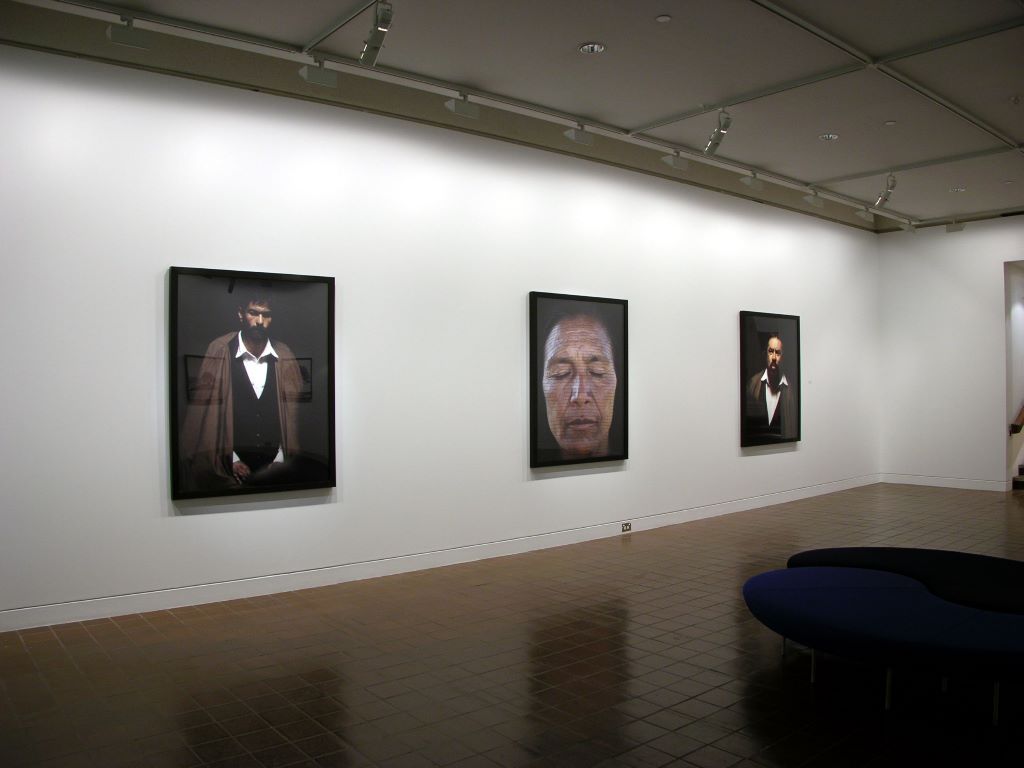—

exhibition Details
The Gallery is privileged to present an exhibition of recent work by internationally renowned American-based Iranian photographer and video-maker Shirin Neshat. One of the most lyrical contemporary Islamic artists, and one of the key figures in contemporary art today, Neshat's work has been shown internationally to wide acclaim.
Sherin Neshat grew up in the ancient city of Qazvin, northwest of Tehran. When she travelled to America in 1974 to study art, she had no idea that the Shah would soon be deposed. In 1979 Iran underwent a cultural revolution under the fundamentalist Islamic rule of Ruhollah Khomeini and the Ayatollahs. The Iran of Neshat's childhood was extinguished. In 1990, after the Ayatollah Khomeini died, Neshat was able to make her first journey home. In returning she experienced the profound difference between modern Iran and the Iran of her childhood - a culture still connected with Persia. Iranians were living a completely different life style from when she left. The Eastern-Islamic values of her childhood were now in utter contradiction with current Iranian society. The changes were particularly evident in the position of women. As the artist explains:
I see my work as a visual discourse on the subjects of feminism and contemporary Islam - a discourse that puts certain myths and realities to the test, claiming that they are far more complex than most of us have imagined… I consider myself a passionate inquirer. I prefer raising questions as opposed to answering them as I am totally unable to do otherwise, and I am not interested in creating works that simply state my personal political point of view...
In Iran gender roles are quite unlike like those in Western societies. Neshat's works address the place of women in a determinedly patriarchal culture. In her video Passage (2001), masses of women and masses of men prepare separately for a burial ritual in the desert. The action is dance-like. The work is an intense invocation on behalf of a body cherished by all gathered. The score - by the great American composer Philip Glass - is achingly poignant.
At home neither in the new Iran nor in the West, but engaged with both, Neshat is a cross-cultural artist. Neshat creates her art - born out from the Islamic nature of Iranian culture - in response to this sense of living 'in between' America and Iran. Avoiding rhetoric and political agenda, she reaches out for more universal meanings.
Her two-screen video installation Tooba (2002) was inspired by Shahrnoush Parsipour's contemporary novel Women without Men. Tooba is the name of a scared tree mentioned in the Koran. Neshat places the tree in an enclosed garden as a sign 'a spiritual longing for paradise and a quest for political power'. Curator Melissa Chiu writes: 'Neshat draws on her cultural heritage to create works that communicate universal ideas about loss, meaning and memory. In Tooba, she engages the viewer in a visual conversation that explores issues such as the immigrant experience, tradition versus modernity, the position of women and the complexities of Islam.'
Another two-screen video installation, Soliloquy (1999), renders East and West as cultures in exile from each other. Here, women are the representatives of difference. Soliloquy stars the artist as protagonist. Neshat plays an observer, residing in neither East nor West. A windswept Turkish landscape and a deserted American street seem more parallel than divergent.
Romantic, poetic, mythic... this is a great opportunity to experience eloquent images by one of the world's most talked about artists.
- Date
- —
- Curated by
- Ron Brownson
- Location
- Main Gallery
- Cost
- $5 - $7